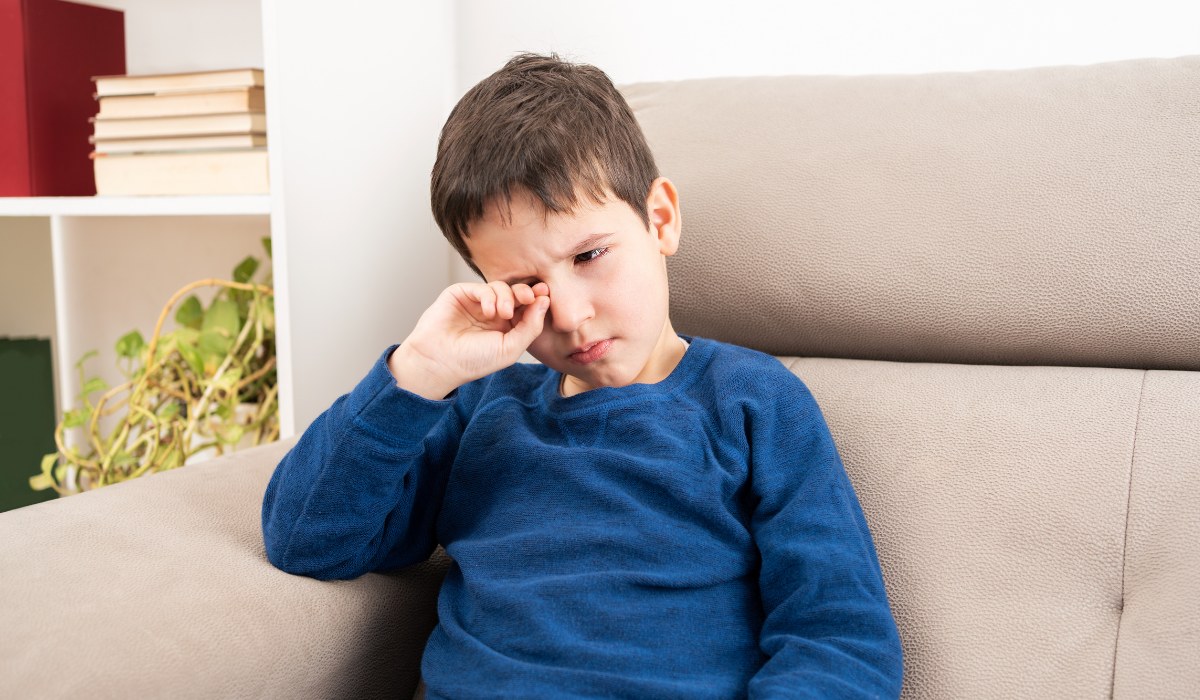Supporting Autistic Children in Managing Seasonal Affective Disorder
Navigating Seasonal Changes: Strategies for Support

Understanding and Addressing SAD in Autistic Children
Seasonal Affective Disorder (SAD) poses unique challenges for children with autism, influencing their mood, behavior, and overall well-being during the darker months of fall and winter. Recognizing the interplay between seasonal changes and autistic traits is vital for caregivers and professionals aiming to provide effective support. This article explores the symptoms, diagnosis, challenges, and comprehensive strategies to help autistic children cope with SAD, emphasizing tailored interventions that consider sensory sensitivities, routines, and emotional health.
Recognizing Symptoms and Effects of SAD in Autistic Children
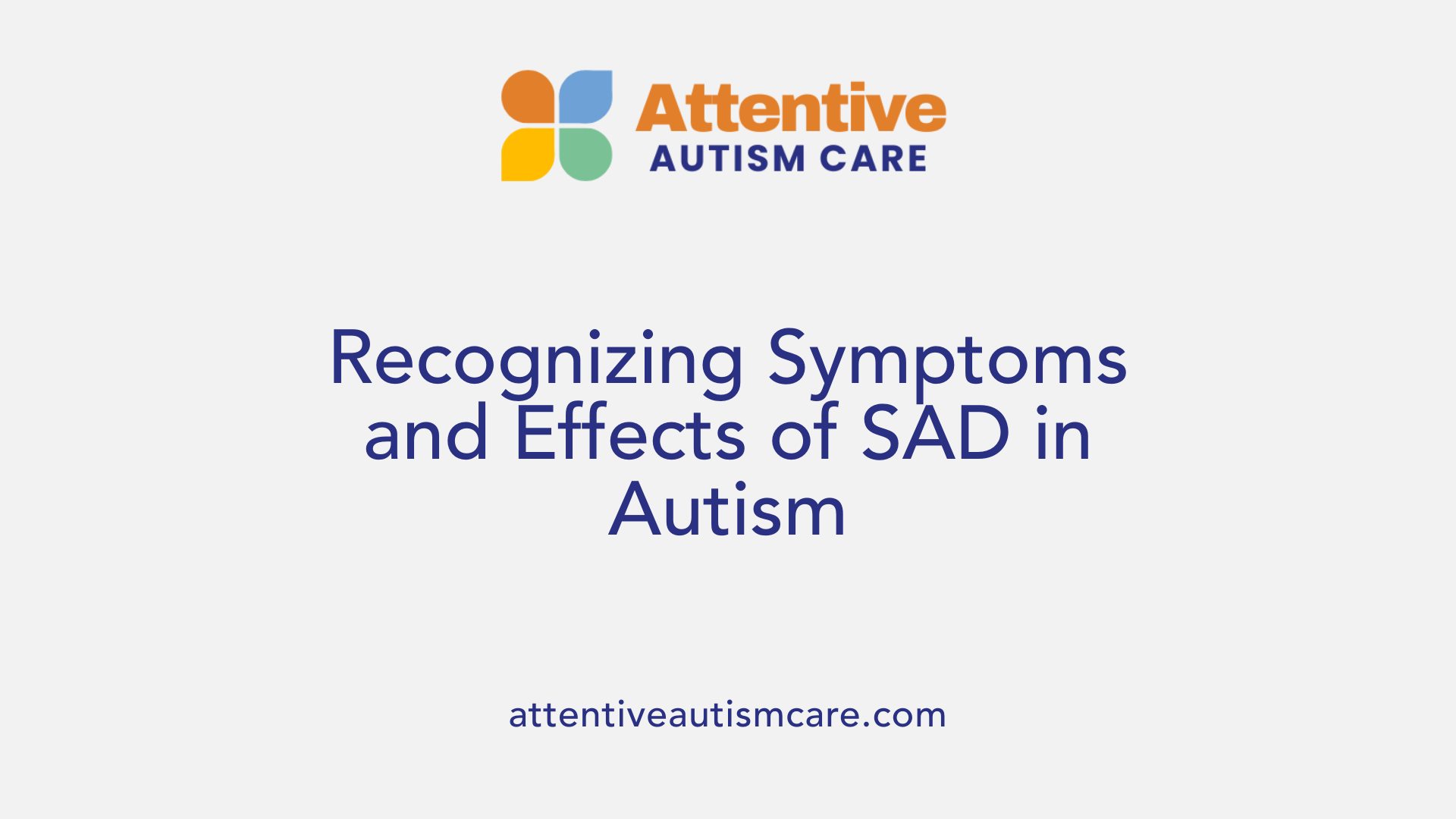
What are the symptoms and effects of Seasonal Affective Disorder (SAD) in children with autism?
Children with autism who experience Seasonal Affective Disorder (SAD) often display specific signs that can affect their mood, behavior, and daily routines. Common symptoms include reduced energy levels, making children seem unusually tired or lethargic. They may withdraw socially, avoiding interactions that they typically enjoy, and show increased irritability or sudden mood swings.
Difficulties in concentration and changes in sleep patterns—such as sleeping more than usual or having trouble sleeping—are frequently observed. Appetite and eating habits might also shift, with some children craving carbohydrate-rich foods or experiencing weight changes. Because these symptoms tend to follow seasonal patterns, they often worsen during fall and winter when sunlight is limited.
In addition to these typical depression symptoms, autistic children may also exhibit heightened sensory sensitivities. For example, they might be overwhelmed by dim or overly bright light, loud sounds, or changes in routine, which can intensify mood disturbances. Anxiety levels may rise, and negative thinking or feelings of hopelessness may become more prominent.
Some children experience what is known as 'summer depression,' where longer, sunnier days lead to overstimulation and routine disruptions, adding to their distress. These seasonal shifts can make everyday activities, social interactions, and learning more challenging. The effects of SAD in autistic children often include worsening mood states, increased anxiety, and substantial difficulty coping with daily tasks.
Managing these symptoms involves tailored interventions such as light therapy, maintaining predictable routines, and providing behavioral and emotional support. Early recognition and supportive measures are vital in helping autistic children navigate seasonal changes and maintain better mental health throughout the year.
Diagnosing and Recognizing Signs of SAD in Autism
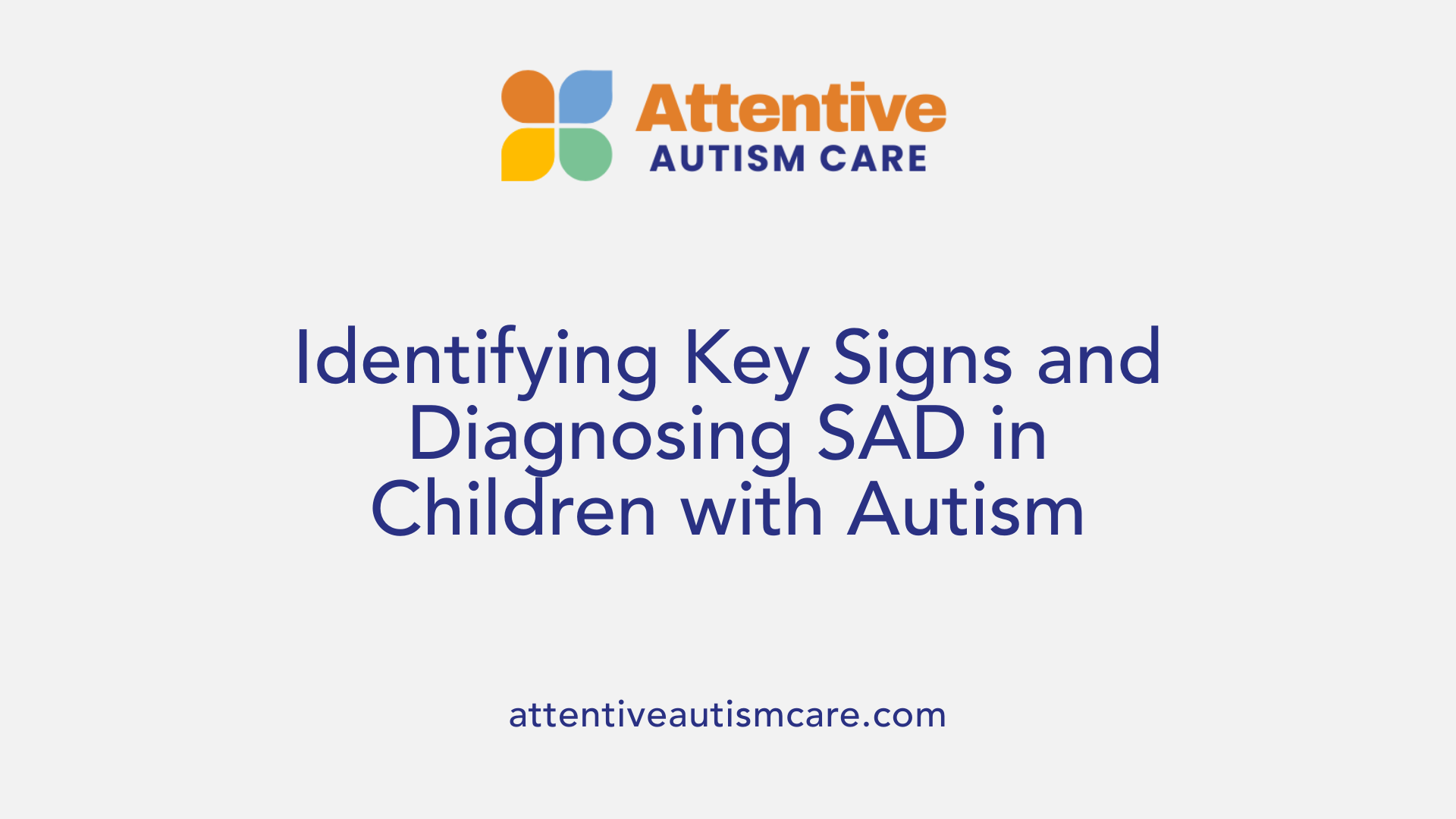
How can diagnosis of SAD be distinguished from other mood or behavioral issues in children with autism?
Recognizing Seasonal Affective Disorder (SAD) in children with autism involves identifying specific patterns in mood and behavior that relate to seasonal changes. To accurately diagnose SAD, clinicians look for symptoms such as increased sadness, irritability, or social withdrawal that consistently worsen during fall and winter when daylight decreases and improve in spring and summer.
A crucial aspect of diagnosis is confirming that these mood fluctuations follow a seasonal pattern over at least two consecutive years. This helps differentiate SAD from more general or baseline mood issues common in autism. Caregivers and healthcare providers observe whether behaviors like fatigue, low energy, or changes in sleep and appetite are tied to specific times of the year.
Specialized assessment tools, such as the Autism Comorbidity Interview – Present and Lifetime Version (ACI-PL), can improve diagnostic accuracy by helping distinguish behaviors related to autism from those triggered by seasonal depression. This comprehensive assessment considers overlapping features and evaluates whether changes are new, worsening, or specifically linked to seasonal transitions.
It’s also important to gather observations from multiple settings and informants, including teachers and therapists, to confirm that mood and behavioral changes are consistent across different environments and align with seasonal shifts.
In summary, the key to diagnosing SAD in children with autism lies in identifying a clear, recurring seasonal pattern of symptoms, ruling out other causes, and using appropriate diagnostic tools to distinguish SAD from other mood or behavioral issues.
Challenges Faced by Autistic Children with SAD
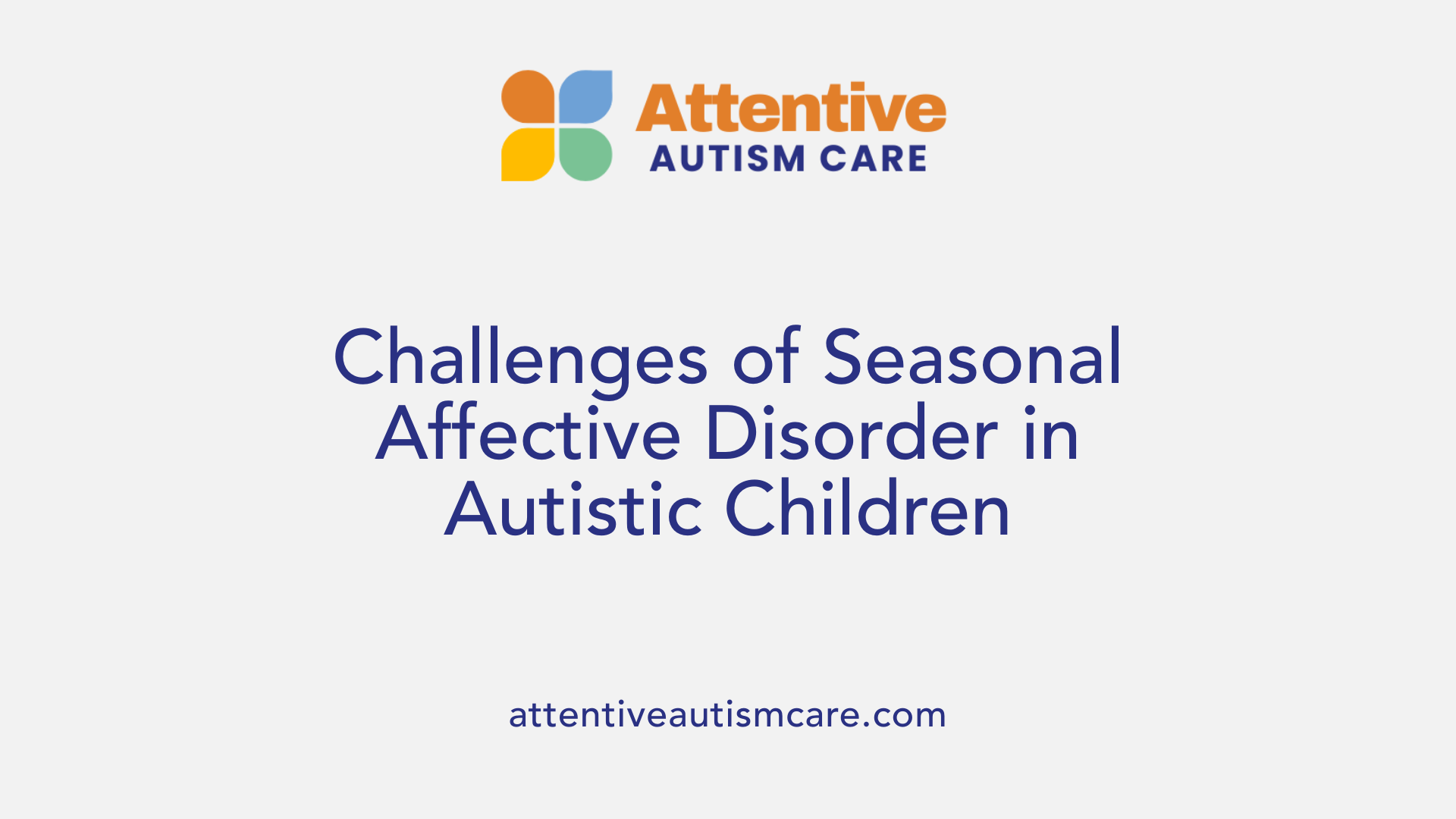
What are the challenges faced by autistic children experiencing SAD?
Autistic children who experience Seasonal Affective Disorder (SAD) encounter a mix of emotional, behavioral, and social challenges that can significantly impact their well-being. The reduction in natural light during fall and winter often leads to mood dips, increased irritability, and fatigue, which may overlap with and intensify existing autism symptoms.
One primary difficulty is heightened emotional distress and anxiety. Changes in routines and environmental light levels can cause confusion and discomfort, making it harder for children to feel secure and stable. This can result in more frequent meltdowns or agitation, complicating their daily management.
Moreover, SAD can exacerbate social withdrawal—a core aspect of autism—by reducing motivation to engage with peers and participate in activities. This isolation can worsen feelings of loneliness and emotional struggles. Sleep disturbances common in SAD, such as difficulty falling asleep or waking early, further disrupt routines that provide stability for autistic children.
Atypical features like an increase in repetitive behaviors or regression in self-care during depressive episodes also pose additional hurdles. These behaviors, often used as coping mechanisms, may intensify under seasonal stress, complicating intervention efforts.
Caregivers and clinicians face the challenge of accurately identifying when mood and behavior changes stem from SAD or are typical autism manifestations. This requires careful assessment and often tailored treatment strategies, such as light therapy or behavioral interventions, to help children navigate seasonal transitions.
In summary, SAD presents unique difficulties for autistic children, including emotional distress, social difficulties, and disrupted routines. Recognizing and addressing these challenges is essential for supporting their mental health and overall development.
Impact of Seasonal Changes on the Mental Health of Autistic Children

How does seasonal change impact mental health in children with autism?
Seasonal transitions can have a profound effect on the emotional well-being and behavior of children with autism. During winter months, decreased sunlight and shorter days disrupt circadian rhythms, leading to lower serotonin levels and altered melatonin production. These biological changes can enhance feelings of depression, fatigue, and irritability, which are often seen in children with autism.
Moreover, the colder temperatures and reduced outdoor activities may limit opportunities for natural light exposure. This can further decrease mood stability and increase sensory sensitivities, making routine interactions more challenging.
In contrast, summer's longer days and increased light exposure can trigger overstimulation. Bright lights, heat, and social demands can cause anxiety, mood swings, and hyperactivity in autistic children. Their heightened sensory sensitivities could lead to sensory overload, meltdowns, or behavioral changes.
Environmental factors such as disruptions in routines, changes in sleep patterns, and sensory inputs are especially difficult for children with autism. Routine disruptions during seasonal shifts—like changes in school schedules or daily activities—may escalate stress and anxiety.
Additionally, early environmental influences—such as seasonal viral infections and vitamin D deficiency—may contribute to neurodevelopmental vulnerabilities, affecting mental health outcomes. These factors can intensify existing sensitivities and emotional regulation challenges.
How do sensory sensitivities and routine disruptions influence this?
Children with autism often experience sensory sensitivities, making them particularly reactive to environmental changes. Increased brightness, loud noises, or sudden temperature shifts typical of seasonal changes can overwhelm their sensory processing, leading to heightened anxiety, irritability, or behavioral episodes.
Routines provide a sense of predictability and security for autistic children. As seasons change, routines might be disrupted—for example, altered school schedules or less outdoor time—causing confusion and distress.
Supporting strategies include maintaining consistent routines, gradually adjusting schedules, and creating stable indoor environments. Visual aids, social stories, and visual schedules can help prepare children for upcoming changes, easing transition anxiety.
In sum, the complex interplay between biological shifts, sensory sensitivities, and disrupted routines during seasonal transitions can significantly impact the mental health of children with autism, necessitating tailored approaches to support their well-being.
Supporting Strategies and Treatment Options for SAD in Autism
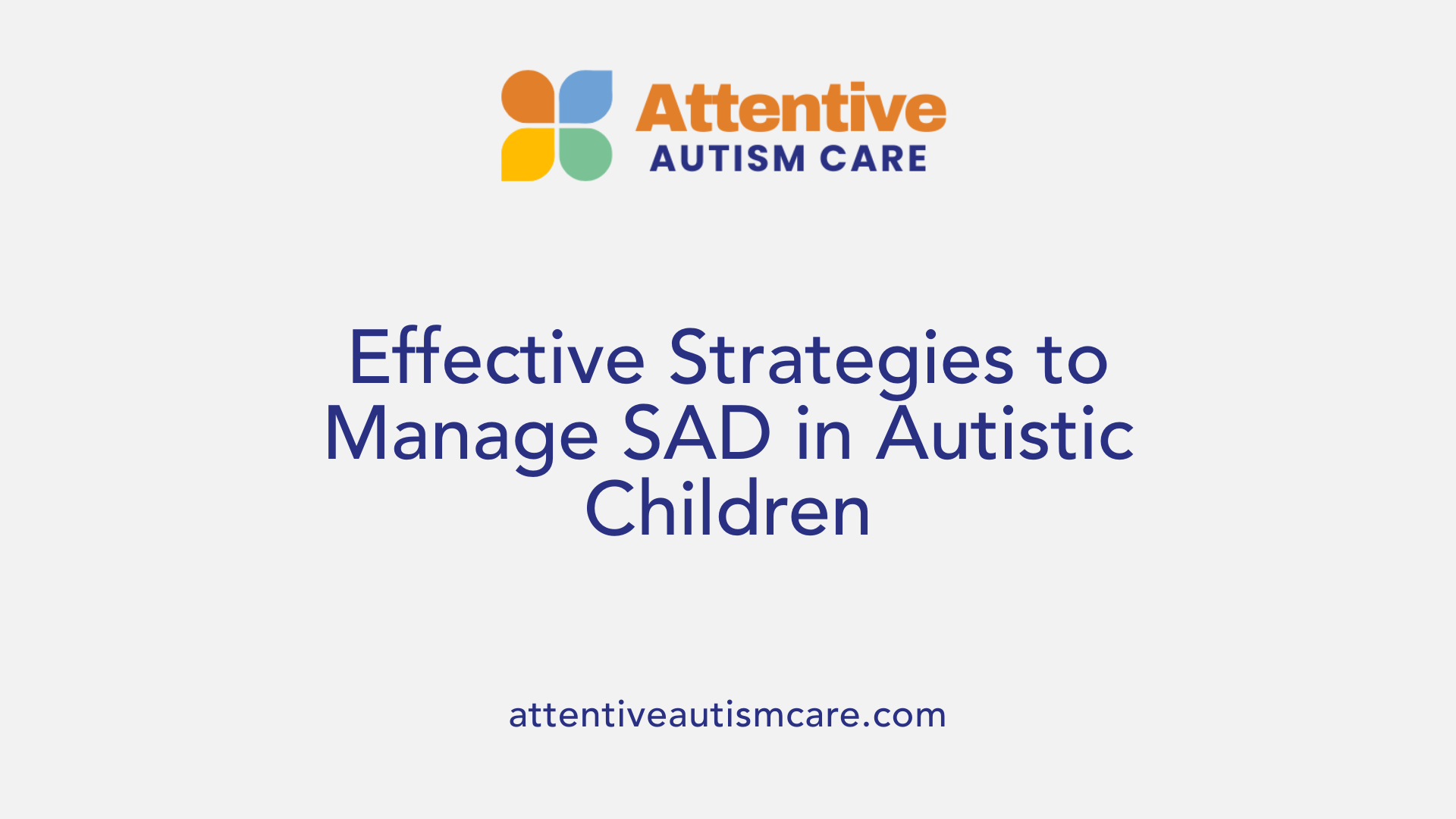
What are effective strategies for managing SAD in autistic children?
Managing Seasonal Affective Disorder (SAD) in autistic children requires a thoughtful combination of environmental adjustments, structured routines, and professional support.
One of the most effective methods is creating a predictable environment. Using visual supports such as schedules, timers, and transition cues helps children understand changes and reduces anxiety. These visual tools can prepare them for daily routines and seasonal shifts, easing behavioral responses.
Increasing exposure to natural light is also vital. Whenever possible, encourage outdoor activities during daylight hours or position children near windows. For darker months, specialized light therapy using SAD lamps can make a big difference. These lamps mimic sunlight and are most effective when used in the morning for about 20 to 30 minutes, but care should be taken to adjust brightness levels to avoid overstimulation.
Physical activity supports mood regulation and physical health. Activities like outdoor walks, gentle yoga, or dancing can help boost endorphins. Regular exercise also helps establish routine and creates a calming effect.
Addressing underlying anxiety is crucial, as sensory sensitivities and routine disruptions can heighten stress. Cognitive-behavioral approaches, such as counseling or behavioral therapy, can teach coping skills and reduce seasonal mood dips.
Supporting parental mental health is equally important. Parents experiencing high stress may find it difficult to provide stability. Access to support groups, counseling, or stress-management techniques can empower caregivers, thereby positively impacting the child's environment.
Other strategies include employing positive reinforcement to encourage participation in preferred activities and remaining calm during behavioral challenges. This helps children feel secure and supported, promoting emotional stability.
Incorporating these practices within a holistic approach—combining environmental modifications, therapy, and emotional support—can significantly alleviate SAD symptoms in autistic children, improving their overall well-being during challenging seasons.
Empowering Caregivers and Building Resilience
Supporting autistic children through seasonal changes requires a comprehensive, individualized approach that addresses the biological, sensory, behavioral, and emotional aspects of SAD. Education and awareness for caregivers about recognizing symptoms, understanding the impact of seasonal fluctuations, and implementing tailored interventions are essential. Combining natural management tactics like light therapy and outdoor activities with behavioral therapies and professional support can significantly improve outcomes. Creating a stable environment, maintaining routines, and fostering emotional resilience help children navigate darker months more comfortably. Ultimately, proactive support and ongoing collaboration among families, healthcare providers, and educators are key to promoting mental health and well-being in autistic children facing seasonal affective challenges.
References
- What does autism with seasonal affective disorder look like?
- Autism and Seasonal Affective Disorder
- Helping Autistic Children with Seasonal Changes
- Quick Guide to Seasonal Affective Disorder (SAD)
- Helping Kids Cope with Seasonal Affective Disorder
- Seasonal Affective Disorder and response to light in two ...
- Seasonal Affective Disorder (SAD)
- Addressing Seasonal Affective Disorder in Kids
- Seasonal Affective Disorder: How It Affects Neurodivergent ...















































































